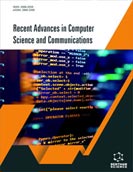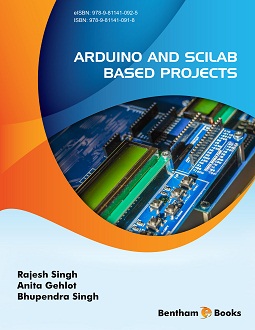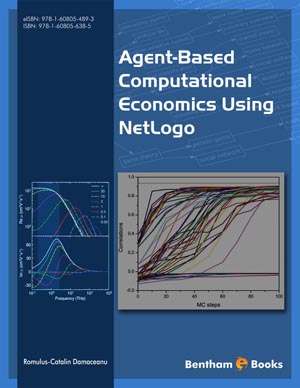Book Volume 1
Respite for Customer’s Privacy Issues using Privacy Preserving Data Mining
Page: 1-9 (9)
Author: Deepak Kumar and Ankita*
DOI: 10.2174/9789814998451121010004
PDF Price: $15
Abstract
Privacy preserving data mining has turned out to be progressively well known on the grounds that it permits sharing of security delicate information for study purposes. Nowadays, individuals have turned out to be progressively reluctant to share their information, over and over again people are either declining to share their information or giving erroneous information. As of late, protection safeguarding information mining has been considered broadly, in light of the wide multiplication of touchy data on the web. We examine strategy for randomization, k-anonymization, and other security safeguarding information mining strategies. Learning is matchless quality, and the more people are educated about data break-in, less inclined they will be to fall prey to the underhanded programmer sharks of data innovation. In this paper, we give a review of Privacy preserving data mining techniques.
Internet Gaming Disorder: Symptoms, Neurological Issues, and Effective Assessment Modalities
Page: 10-26 (17)
Author: Abhishek Jain, Kapil Dev Gupta* and Shanu Sharma
DOI: 10.2174/9789814998451121010005
PDF Price: $15
Abstract
Gaming over the internet is one of the major interests in children and adolescents. Nowadays, a wide range of games are available on the internet ranging from casual browser games, multiplayer games, and simulator-based games, etc. This advanced gaming technology allowed players to connect with each other virtually through their social connection. However, excessive internet gaming leads to functional and structural changes in the brain areas. Thus behavioural changes are noticed commonly in the new generation. They are moving from real-life social relations to online social sites, and when this movement is uncontrolled by self-restriction or not limited by supervision gradually turns into online addiction. The World Health Organization (WHO) has recognized Internet Gaming disorder (IGD) as a diagnosable condition and decided to include it in the “International Classification of Diseases (ICD)” 11th edition in the year 2018. Such online gaming addiction study is gaining interest in clinicians and researchers, making it an active area of research. The study of its symptoms and its assessment methods for detecting and analyzing internet gaming addiction is the need of the hour. In this paper, an extensive study about Internet Gaming Disorder and its assessment methods was presented. Examination of IGD in participants using different modalities ranging from self-reported psychological questionnaires-based assessment to pathological neuroimaging methods to multimodal biosignal analysis is discussed and analysed. Comparative analysis of modalities has also been performed in order to summarize findings in terms of efficiency, mobility, and availability. The analysis presented in this paper will be useful for the researchers for developing an effective computational method for IGD analysis.
A Machine Learning APP for Prediction of Pandemic such as COVID-19
Page: 27-38 (12)
Author: Smriti Jojo, Saru Dhir* and Madhurima
DOI: 10.2174/9789814998451121010006
PDF Price: $15
Abstract
COVID-19 PANDEMIC is the current pandemic infection caused by a new strain of coronavirus. It is contiguous, and there is no vaccine developed to date. There have been a lot of measures, such as lockdown, taken by the Indian government to tackle the pandemic. Though 4 phases of the strict lockdown period haven’t made much progress in decreasing the COVID-19 spreading curve, the government finally had to unlock/lockdown for containment zones in the Country. Here, in this paper, the author has developed a flutter based Mobile Application that uses Machine learning to predict COVID-19 outbreak for the upcoming week based on the past time-series data. The application is named “COVID_19 India” as it gives the nationwide COVID-19 information and forecast for India. This project opens a plethora of opportunities in the field of research, data science, development, AI and machine learning implementations, and integration of information technology in the field of healthcare.
Different Authorization Mechanism for Software System
Page: 39-48 (10)
Author: Sudhir Kumar Gupta, Deepak Kumar*, Munesh Chandra Trivedi and Kamal Nayan Agarwal
DOI: 10.2174/9789814998451121010007
PDF Price: $15
Abstract
Software Quality is a major concern when we develop any application. Data privacy, customer trust, and any long-term goal depend on how well and secure our application and business success also depend upon it. It involves many factors, starting from the design phase and can go to the implementation phase. A major part of software quality is software security. Software security ensures that our software work continuously and correctly in a malicious attack environment. Authorization is the backbone of any application and plays an important role in application security. When a user login into a system, the system should identify how many access rights he has related to each functionality. It is then the responsibility of implemented authorization policy to restrict him or her based upon that. We have some existing authorization techniques, and this paper focuses on the review of authorization techniques with the pros and cons of the existing approach. Comparison between different authorization techniques has also been discussed.
A Swift Approach for Malware Detection
Page: 49-57 (9)
Author: S. Hasnain Pasha, Deepti Mehrotra, Abhishek Srivastava* and Chetna Choudhary
DOI: 10.2174/9789814998451121010008
PDF Price: $15
Abstract
Malware Detection is imperative in cybersecurity. With the increasing rate of cyber crime incidents, it has now become the priority in the cyber security domain. Different machine learning concepts are implemented for detecting malware, hence dealing with a large number of datasets. This gives researchers a reason to focus on reducing parameters in the datasets that have little or no impact on detection accuracy and improve detection time. This paper attempts to implement one such technique to optimize data sets for quick results.
Measuring Academics’ Intentions to use a Project Management System (PMS): A Case Study of the College of Computing and Information Technology, Shaqra University
Page: 58-69 (12)
Author: Nayyar Ahmed Khan*
DOI: 10.2174/9789814998451121010009
PDF Price: $15
Abstract
Traditional mechanisms for managing information have become outmoded as theinformation is increasing in quantity, and more resources are utilized for its management. This paper proposes an application that will help to manage complete datasets in their required formats in an academic domain. Unlike in the corporate sphere, there is an acute need for such management systems in academia. A system was deployed at Shaqra University, College of Computing and IT. The dataset took into consideration a quality assurance project currently being undertaken at the University. This paper blends the DOI model with the TAM Model to measure academics’ intentions to use the Project Management System. The results reveal a positive relationship between the perceived ease of use, perceived usefulness, attitudes toward using, Trialiability, Compatibility, Observability, and academics’ Intentions to Use the Project Management System. The paper presents a final observation set that shows the association between various parameters and academic intentions regarding their use of the project management system.
Document Sentiment Analysis using Python
Page: 70-90 (21)
Author: Manavi Nair*, Sonia Saini, Ruchika Bathla and Ritu Punhani
DOI: 10.2174/9789814998451121010010
PDF Price: $15
Abstract
Sentiment Analysis is a part of artificial intelligence that uses natural language processing (NLP) to analyze the raw data and further extract the user's sentiment. The sentiment analysis can be achieved at three levels: at the document level, sentence level, and aspect level. In this chapter, we will be covering Document Sentiment Analysis, in which we analyze the contents of the document. This chapter gives a practical overview of the field of document sentiment analysis using the rulebased method. The main idea is to show the working of document sentiment analysis. The analysis can be done using the python language. Python language is a high-level language that is used in artificial intelligence and various related fields. Two different libraries have been used to do the analysis. The NLTK library is a free and open-source library used for tokenization, stop words, and lemmatization whereas, the spacy library is used for its displacy visualizer module, which shows the illustrations of the sentences and named entity recognition, highlighting the entities present in the document. The experiment is conducted using the pre-processing methods, and a conclusion is derived with the aid of the result.
Comparison of SDLC Models Based on Software Estimation Techniques
Page: 91-105 (15)
Author: Saru Dhir*, Manish Asthana, Kapil Dev Gupta and Abhishek Jain
DOI: 10.2174/9789814998451121010011
PDF Price: $15
Abstract
Software estimation has a key role in software project planning due to its huge impact on the software development life cycle. Thus, precise estimation of effort and cost along with the duration of project helps in software project delivery in stipulated time within budget. The agile model helps the team to improve any process over traditional models, and it applies to the estimation process as well. Irrespective of the Software development life cycle (SDLC) model used, it still remains a challenge to accurately estimate the size and effort required for developing the software system.
Internet Privacy Concerns and Social Awareness
Page: 106-113 (8)
Author: S. Hasnain Pasha*, Deepti Mehrotra, Abhishek Srivastava and Chetna Choudhary
DOI: 10.2174/9789814998451121010012
PDF Price: $15
Abstract
Internet Privacy is a matter of grave concern as there is an exponential growth in our digital footprints. Most internet users are not aware of what internet privacy is, and some are not concerned at all. With the growth of cybercrime, internet users must know what internet privacy is and why they should be aware of it. Genuine information or credentials shared online between an internet user and an internet-based service might be intercepted by hackers maliciously or even government bodies legally, can be used for any malicious intent. Some of the recent cases of data breaches support this, making it one of the most critical reasons for internet users hesitant in trusting any internet-based service. The paper gives an idea that the more an internet user is aware of what internet privacy is, chances are the more he/she will be able to trust any internet-based service since the internet is the new platform for social as well as professional trading.
Beat the Virus
Page: 114-122 (9)
Author: Aryan Khari*, Muskan Gupta, Saru Dhir and Chetna Choudhary
DOI: 10.2174/9789814998451121010013
PDF Price: $15
Abstract
Coronaviruses (CoV) are a very large group of viruses that causes sickness going from the regular virus to progressively extreme maladies. An epic coronavirus (nCoV) is a different strain that has not been recently found in people. Point by point, the investigation found that SARS1-CoV was a transfer from people to people and MERS-CoV from dromedary camels 2to people. A few known coronaviruses are getting in creatures that have not yet contaminated normal people. Normal indications of virus incorporate respiratory side impacts3. In increasingly extreme cases, the disease can cause pneumonia, severe intense respiratory disorder, kidney disappointment, and even demise. In view of the rising epidemic of ‘COVID-19’; “BEAT THE VIRUS” is a side scroller4 entertaining game established to make people realize the importance of hygiene and sanitization in beating the epidemic5 of this virus. Side scrollers expect clients to move one consistent way (generally to one side). By means of a fun game, people will know the importance of ‘Masks’, ’Gloves’ and ‘Hand Sanitizer’ in fighting the virus.
Introduction
A variety of computing techniques have been developed in recent times in combination with emerging technologies. Such techniques, coupled with an increase in computing power, has given credence to an information based paradigm in many fields (also termed as informatics). Informatics computing has evolved into complex structures of heterogeneous methods involving multiple data processing applications. Research on new technologies also brings new tools to use along with continuous improvements in existing tools. This reference presents contributions that cover emerging computing techniques and their implementation in computer science, informatics and engineering, as well as other important topics that are often discussed in the modern computing environment. Chapters in this book are contributed by researchers, academicians and industry experts and inform readers about current computer technologies and applications. The topics covered in the book include, online privacy, internet gaming disorder, epidemiological modelling (including COVID-19), computer security and malware detection, document sentiment analysis, and project management. This book is an interesting update on new trends in computing techniques and applications for readers interested in the latest developments in computer science.






















